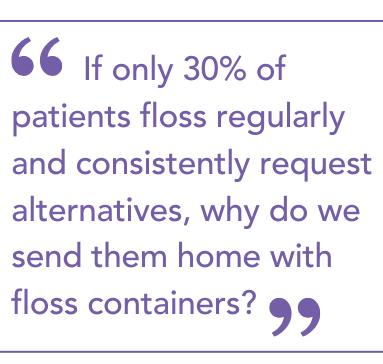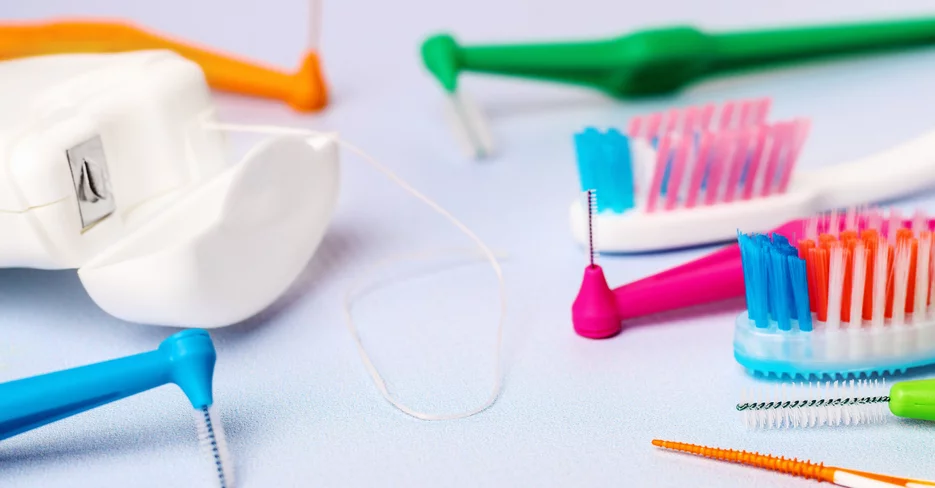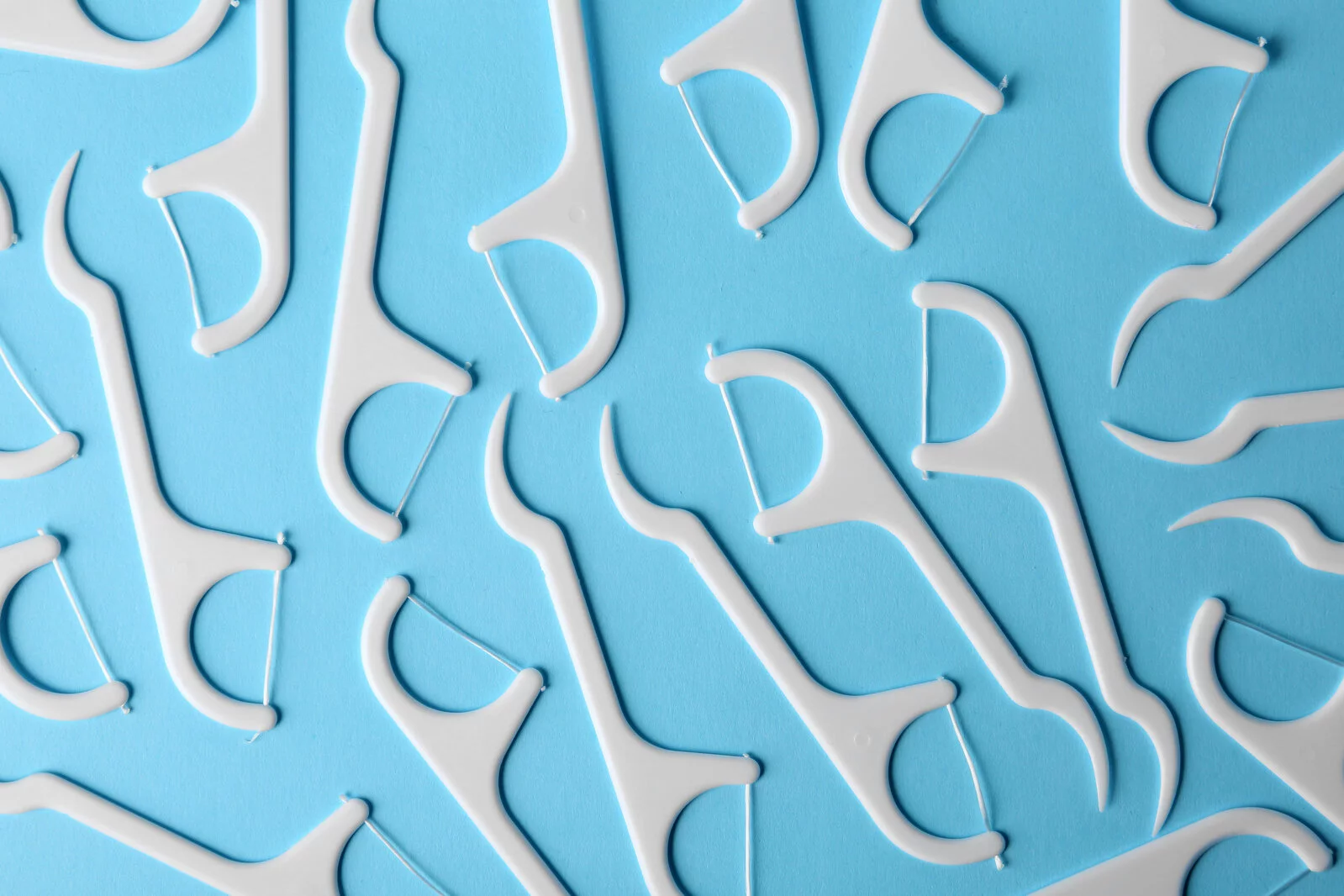JoAnn Gurenlian, RDH, MS, PhD, AAFAAOM, FADHA
October 8, 2025
Don’t miss Dr. Gurenlian’s updated continuing education course “A Fresher Look at String Floss” available in the ADHA CE Smart Catalog – an evidence-based update to interdental care recommendations.
I am not anti-floss. As dental hygienists, we rely on floss completely. You likely have it in your bathroom, desk, operatory drawer and bag.
But decades of recommending floss as the universal gold standard for interdental cleaning may not align with current evidence.
The Evidence Is Shifting
Fewer than 30% of individuals floss regularly.1 Among those who do, many struggle with proper technique, rendering their efforts ineffective. String floss requires significant dexterity and coordination that many patients lack.
Contemporary dental hygiene textbooks reflect this reality. The latest editions of Wilkins’ Clinical Practice of the Dental Hygienist, Darby and Walsh’s Dental Hygiene Theory and Practice, and Dental Hygiene: Applications to Clinical Practice state that high-quality flossing is difficult for most patients. When gingival inflammation is present, interdental brushes are preferred. The evidence supporting flossing as an adjunct to toothbrushing is weak.
Most notably: no evidence shows that flossing reduces interproximal caries.
American organizations continue promoting “brush, floss, rinse” messages, while the European Federation of Periodontology recommends interdental brushes as first-line therapy. Their evidence-based guidelines state there is no evidence to support floss except in healthy mouths.2,3
What the Science Shows
Network meta-analyses by Slot et al.4 demonstrate that interdental brushes remove plaque 2–2.5 mm below the gingival margin—exceeding traditional floss capabilities. Patients find them easier to use with better compliance rates.
Oral irrigators improve gingival health more than toothbrushing alone. They benefit patients with orthodontics, implants, or dexterity limitations. Custom-fit mouthpieces with 3D-printed water jets can improve gingival health in seven seconds daily.

This shift emphasizes individualized care. Each patient presents with unique anatomy, disease status, and dexterity that should determine recommendations.
If only 30% of patients floss regularly and consistently request alternatives, why do we send them home with floss containers? Customizing take-home items with appropriate tools for each patient’s specific needs makes more sense.
Floss works for patients with healthy gingiva and tight contacts. For patients with periodontal disease, larger embrasure spaces, or physical limitations, other tools serve them better.
Evidence-based approaches that provide patients with tools they’ll actually use consistently represent the direction of interdental care.
Why This Updated Course Matters
The evidence on interdental care has evolved significantly since 2021, prompting me to update and refresh my original course. With updated EFP guidelines, and innovative technologies like custom-fit oral irrigators, dental hygienists need current, evidence-based guidance to make informed recommendations.
The newly released course provides the assessment frameworks, sizing techniques, and patient education strategies needed to move beyond one-size-fits-all recommendations. This isn’t about changing everything we do—it’s about having the tools to customize care appropriately.
Dr. Gurenlian’s refreshed course “A Fresher Look at String Floss” offers the evidence review, practical assessment tools, and patient communication strategies that enable truly personalized interdental care recommendations.
____________________________________
References
- Liang and I. M. Aris, “Minimal changes in daily flossing behavior among US adults from 2009 through 2020,” Journal of the American Dental Association 155, no. 7 (2024): 587–596, https://doi.org/10.1016/j.adaj.2024.04.001.
- L. C. Chapple, F. Van der Weijden, C. Doerfer, D. Herrera, L. Shapira, D. Polak, P. Madianos, A. Louropoulou, E. Machtei, N. Donos, H. Greenwell, A. J. Van Winkelhoff, B. Eren Kuru, N. Arweiler, W. Teughels, M. Aimetti, A. Molina, E. Montero, and F. Graziani, “Primary prevention of periodontitis: managing gingivitis,” Journal of Clinical Periodontology 42, Suppl. 16 (2015): S71–S76, https://doi.org/10.1111/jcpe.12366.
- Sanz, D. Herrera, M. Kebschull, I. Chapple, S. Jepsen, T. Beglundh, A. Sculean, and M. S. Tonetti, “The treatment of stage I–III periodontitis: the EFP S3-level clinical practice guidelines,” Journal of Clinical Periodontology 47, Suppl. 22 (2020): 4–60, https://doi.org/10.1111/jcpe.13290.
- E. Slot, C. Valkenburg, and G. A. Van der Weijden, “Mechanical plaque removal of periodontal maintenance patients: a systematic review and network meta-analysis,” Journal of Clinical Periodontology 47, Suppl. 22 (2020): 107–124, https://doi.org/10.1111/jcpe.13275.
____________________________________
 JoAnn Gurenlian, RDH, MS, PhD, AAFAAOM, FADHA is the ADHA Director of Education, Research & Advocacy, professor emerita in the Department of Dental Hygiene at Idaho State University, and former president of the American Dental Hygienists’ Association, 1990-1991.
JoAnn Gurenlian, RDH, MS, PhD, AAFAAOM, FADHA is the ADHA Director of Education, Research & Advocacy, professor emerita in the Department of Dental Hygiene at Idaho State University, and former president of the American Dental Hygienists’ Association, 1990-1991.



